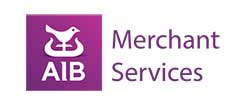- Compare Card Processing Rates from as low as 0.27%
- Keep your card processing fees to a minimum
- Direct access to 80% of the UK’s leading acquiring banks
- Make the right choice for your next UK payment provider
- Ensure your rates always remain competitive
- Seamlessly switch payment provider without a hitch






We're rated Excellent on
Understanding Electronic Payment: A Guide for Businesses and Consumers
In today’s fast-paced digital economy, electronic payment solutions have revolutionised the way businesses and consumers handle financial transactions. E-payment systems offer significant advantages such as convenience, speed, and security. From online shopping to supplier payments, the shift from cash and paper checks to digital payments has improved speed, security, and convenience.
This guide explores electronic payment methods, how they work, their benefits, and key considerations for businesses and consumers in the UK.
Introduction to Electronic Payments
Electronic payments have revolutionized the way businesses and individuals make transactions, offering a convenient, efficient, and secure way to pay for goods and services. With the rise of digital payments, electronic payment methods have become increasingly popular, providing a range of benefits, including lower processing costs, improved cash flow, and enhanced security.
Electronic payments encompass a variety of methods, from credit and debit card payments to digital wallets and bank transfers. These methods allow for seamless transactions, whether you’re shopping online, paying vendors, or handling payroll. The shift from traditional payment methods like cash and paper checks to digital payments has streamlined financial transactions, making them faster and more reliable.
Understanding the different types of electronic payment methods and how they work is crucial for both businesses and consumers. By leveraging these modern payment solutions, businesses can reduce transaction fees, enhance security, and ensure timely payments, while consumers enjoy the convenience and speed of digital transactions.
What Are Electronic Payments?
An electronic payment method enables making payments electronically without physical cash. These transactions occur through digital transactions, such as credit card payments, bank transfers, digital wallets, and ACH transfers.
How Do Electronic Payments Work?
When a customer pays for goods or services electronically, the process typically involves:
- Payment Initiation – The customer provides payment information (e.g., credit card details or bank account details).
- Authorization – The payment gateway verifies the transaction with the cardholder’s bank account or credit line.
- Funds Transfer – The payment processor facilitates the electronic funds transfer from the buyer to the merchant, ensuring that funds are automatically transferred in real-time.
- Settlement – Funds are deposited into the merchant account, often within 1-3 business days.
This seamless process ensures timely payments, reducing delays associated with traditional methods like paper checks.
Types of Electronic Payments
There are several electronic payment types, each catering to different needs:
1. Credit and Debit Card Payments
- Credit card payments allow consumers to borrow money up to the cardholder’s credit line.
- Debit card payments deduct funds directly from the cardholder’s bank account.
- Popular providers include Visa, Mastercard, and American Express.
2. Bank Transfers
Bank transfer payments (including wire transfers) move money directly between one bank account and another in real-time payments.
ACH transfer payments (Automated Clearing House) are common for recurring payments like payroll, offering an efficient and cost-free alternative to traditional paper checks.
3. Digital Wallets (E-Wallets)
Apple Pay, Google Pay, and other digital wallets store payment information securely. These modern payment solutions also incorporate various banking services, such as online payments, virtual accounts, currency exchange, and escrow services. Ideal for online transactions and contactless in-store purchases.
4. Payment Gateways for E-Commerce
E-commerce payment systems like Stripe and PayPal facilitate secure online payment for online shopping.
They support multiple payment methods, including credit or debit card and ACH debit.
5. Direct Deposits & ACH Transfers
Used for payroll, vendor payments, and recurring payments. Electronic checks are another method of electronic payments, allowing transactions to be made online without relying on physical checks or cash. Direct deposit eliminates the need for physical checks.
Benefits of Electronic Payment Systems
1. Speed and Efficiency
Electronic payments work in real-time or near real-time, ensuring timely payments. Digital payment methods, such as wire transfers and electronic funds transfers (EFTs), offer enhanced security, convenience, and flexibility for businesses and consumers. Businesses can pay vendors and receive customer payments faster.
2. Lower Processing Costs
Compared to handling cash or checks, electronic payment processing reduces transaction fees and processing fees. Integrating payment solutions with major ERPs and accounting software providers can further enhance payment efficiency and provide real-time access to transaction data for businesses.
Some methods, like ACH transfers, have lower processing costs than credit card processors.
3. Enhanced Security
Secure payments with encryption and fraud detection reduce risks. Unlike a physical card, virtual cards offer enhanced security advantages, such as better fraud prevention and ease of cancellation if compromised. No need to handle sensitive financial data physically.
4. Global Accessibility
- Supports international payments and international transactions without currency barriers.
- Businesses can pay electronically to suppliers worldwide.
5. Convenience for Consumers
Customers can shop online and pay electronically with ease. Online payments offer a convenient and secure method for completing transactions, making e-commerce more accessible and efficient.
Recurring payments automate subscriptions and bills.
Challenges of Electronic Payment Processing
Despite their advantages, electronic payment methods come with some challenges:
Credit cards, for instance, often face issues such as fraud, high transaction fees, and chargebacks.
These challenges include security concerns, the need for robust encryption, and the potential for technical glitches.
1. Transaction Fees
Credit card payments and some payment processing services charge monthly fees or per-transaction costs. These costs can add up, especially when considering business-related transactions such as travel and entertainment (T&E) expenses, recurring payments, and vendor purchases.
2. Fraud Risks
Cybercriminals may target payment information, requiring strong security measures.
Online banking, which often involves ACH transfers, necessitates robust security protocols to protect electronic transactions.
3. Technical Issues
Downtime in payment gateways can disrupt online transactions. Choosing a reliable payment method is crucial to ensure smooth and secure transactions, minimize fees, and enhance vendor relationships.
4. Compliance Requirements
Businesses must adhere to PCI DSS (Payment Card Industry Data Security Standard) when handling credit card details. Additionally, the regulatory aspects of e payments are crucial, as electronic payments must comply with various security and data protection standards.
Tips for Enhancing Security
To enhance security when accepting electronic payments, businesses should prioritize the use of secure payment gateways. These gateways encrypt financial data, ensuring that sensitive information is protected during transactions. Additionally, implementing reliable risk management systems can help detect and prevent potential security risks, safeguarding both the business and its customers.
Regularly updating software and hardware is another critical step in maintaining security. Outdated systems can have vulnerabilities that cybercriminals exploit, so keeping everything up-to-date is essential. Monitoring transactions and account activity regularly can also help detect and prevent security breaches, allowing businesses to respond swiftly to any suspicious activity.
By taking these measures, businesses can create a secure environment for electronic payments, building trust with their customers and protecting their financial data.
Best Practices for Electronic Payments
To get the most out of electronic payments, businesses should follow best practices that ensure security, efficiency, and convenience. Using secure payment gateways is a fundamental step, as it protects financial data and authorizes transactions safely. Implementing two-factor authentication adds an extra layer of security, making it harder for unauthorized users to access accounts.
Regularly updating software and hardware is crucial to prevent vulnerabilities and ensure that the payment systems are running smoothly. Providing clear and concise payment instructions to customers can also enhance their experience, making the payment process straightforward and hassle-free.
Efficiency in payment processes is key. Businesses should streamline their payment systems to minimize delays and errors, ensuring that transactions are processed quickly and accurately. By adhering to these best practices, businesses can optimize their electronic payment systems, improving cash flow and customer satisfaction.
Common Electronic Payment Mistakes
Common electronic payment mistakes can undermine the efficiency and security of transactions. One major error is using unsecured payment gateways, which can expose financial data to cyber threats. Failing to implement two-factor authentication is another mistake, as it leaves accounts more vulnerable to unauthorized access.
Not regularly updating software and hardware can lead to security vulnerabilities and system inefficiencies. Businesses should also avoid using outdated payment processing systems, which may not comply with current industry standards and regulations. Ensuring that payment processes are compliant with industry regulations, such as PCI DSS, is essential to protect sensitive financial data.
By avoiding these common mistakes and following best practices, businesses can ensure that their electronic payment processes are secure, efficient, and convenient. This not only provides a better experience for customers but also improves cash flow and overall business performance. Whether you’re a small business or a large corporation, electronic payments can help you streamline your payment processes and enhance your bottom line.
How Businesses Can Start Accepting Electronic Payments
To accept electronic payments, businesses should:
- Choose a Payment Processor – Compare credit card processors and payment gateways (e.g., Stripe, Square).
- Set Up a Merchant Account – Required for processing credit or debit card transactions. Bank accounts play a crucial role in facilitating various types of electronic fund transfers, including ACH payments and international wire transfers.
- Integrate Payment Solutions – Ensure compatibility with e-commerce payment systems.
- Ensure Security Compliance – Protect financial data with encryption and fraud detection.
- Offer Multiple Payment Methods – Support different electronic payment methods (cards, digital wallets, bank transfers).
Future Trends in Electronic Payments
- Contactless Payments – Growth of Apple Pay and Google Pay.
- Cryptocurrency Payments – Some businesses now accept Bitcoin and other digital currencies.
- Biometric Authentication – Fingerprint and facial recognition for secure payments.
- Real-Time Bank Transfers – Faster bank transfers through Open Banking.
Conclusion
The shift to electronic payment systems has transformed financial transactions, offering efficiency, security, and global reach. Choosing the right electronic payment method is crucial for businesses to ensure suitable payment options tailored to their vendors, enhancing security, cash flow, and timely processing. Whether you’re a business looking to ensure timely payments or a consumer wanting to shop online seamlessly, understanding electronic payment types is essential.
By adopting the right payment methods, businesses can reduce processing fees, improve cash flow, and enhance customer experience. Meanwhile, consumers benefit from faster, more secure payments across international transactions and everyday purchases.
As digital payments continue to evolve, staying informed about the latest trends will help both businesses and consumers make the most of electronic payment processing.
Would you like to explore the best payment gateway for your business? Check out our reviews of top UK payment processors today!
